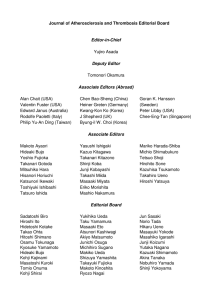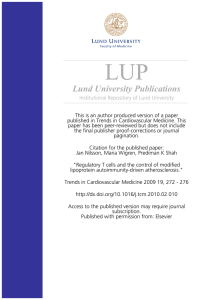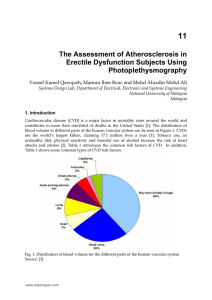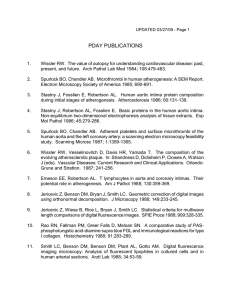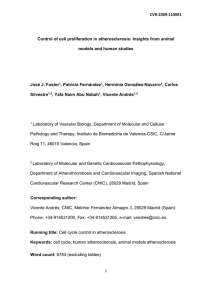7041.pdf 22nd Annual NASA Space Radiation Investigators' Workshop (2011)
advertisement
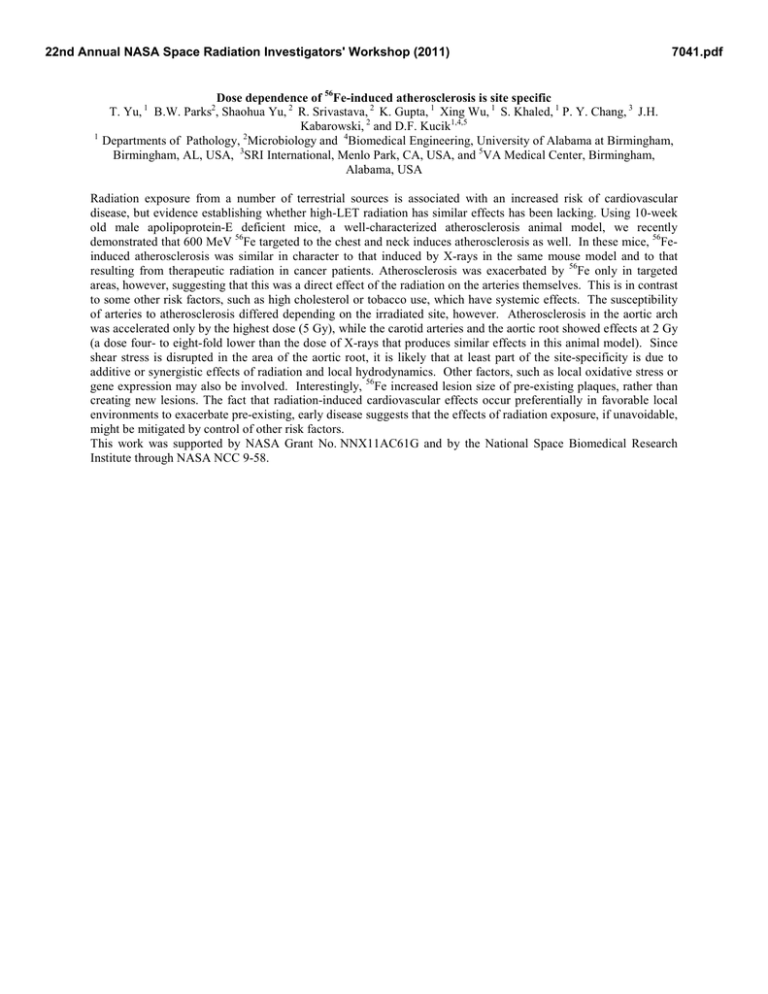
22nd Annual NASA Space Radiation Investigators' Workshop (2011) Dose dependence of 56Fe-induced atherosclerosis is site specific T. Yu, B.W. Parks , Shaohua Yu, 2 R. Srivastava, 2 K. Gupta, 1 Xing Wu, 1 S. Khaled, 1 P. Y. Chang, 3 J.H. Kabarowski, 2 and D.F. Kucik1,4,5 2 Departments of Pathology, Microbiology and 4Biomedical Engineering, University of Alabama at Birmingham, Birmingham, AL, USA, 3SRI International, Menlo Park, CA, USA, and 5VA Medical Center, Birmingham, Alabama, USA 1 1 7041.pdf 2 Radiation exposure from a number of terrestrial sources is associated with an increased risk of cardiovascular disease, but evidence establishing whether high-LET radiation has similar effects has been lacking. Using 10-week old male apolipoprotein-E deficient mice, a well-characterized atherosclerosis animal model, we recently demonstrated that 600 MeV 56Fe targeted to the chest and neck induces atherosclerosis as well. In these mice, 56Feinduced atherosclerosis was similar in character to that induced by X-rays in the same mouse model and to that resulting from therapeutic radiation in cancer patients. Atherosclerosis was exacerbated by 56Fe only in targeted areas, however, suggesting that this was a direct effect of the radiation on the arteries themselves. This is in contrast to some other risk factors, such as high cholesterol or tobacco use, which have systemic effects. The susceptibility of arteries to atherosclerosis differed depending on the irradiated site, however. Atherosclerosis in the aortic arch was accelerated only by the highest dose (5 Gy), while the carotid arteries and the aortic root showed effects at 2 Gy (a dose four- to eight-fold lower than the dose of X-rays that produces similar effects in this animal model). Since shear stress is disrupted in the area of the aortic root, it is likely that at least part of the site-specificity is due to additive or synergistic effects of radiation and local hydrodynamics. Other factors, such as local oxidative stress or gene expression may also be involved. Interestingly, 56Fe increased lesion size of pre-existing plaques, rather than creating new lesions. The fact that radiation-induced cardiovascular effects occur preferentially in favorable local environments to exacerbate pre-existing, early disease suggests that the effects of radiation exposure, if unavoidable, might be mitigated by control of other risk factors. This work was supported by NASA Grant No. NNX11AC61G and by the National Space Biomedical Research Institute through NASA NCC 9-58.
